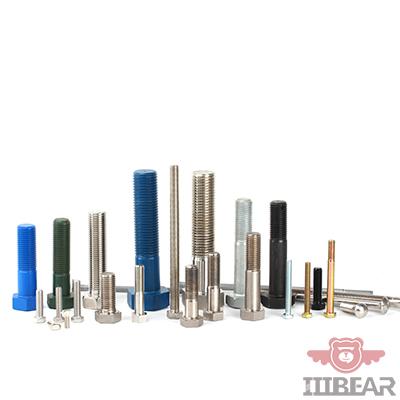Differences Between Passivation and Sealing: How to Choose the Right Surface Treatment for Fasteners
Fasteners, such as screws, bolts, and nuts, are essential components in various industries. Their durability, resistance to corrosion, and overall performance are directly influenced by the surface treatment applied. Two common surface treatments for fasteners are passivation and sealing. Although both aim to enhance the longevity and effectiveness of fasteners, they have distinct functions and applications. In this article, we’ll explore the differences between passivation and sealing and provide guidance on selecting the right treatment for your specific needs.

Understanding Passivation
Passivation is a chemical process that removes surface contaminants and enhances the natural corrosion resistance of stainless steel and other metals. It typically involves treating the metal surface with an acid solution to eliminate free iron and other impurities that may cause corrosion. The result is a cleaner, more inert surface that can better withstand environmental conditions such as humidity, exposure to chemicals, and other corrosive factors.
Key Benefits of Passivation:
- Enhanced Corrosion Resistance: By removing contaminants, passivation significantly reduces the risk of rust or corrosion, especially in stainless steel fasteners.
- Increased Longevity: Passivated fasteners tend to last longer in harsh environments, as they are less likely to degrade due to corrosion.
- Clean Surface: Passivation leaves the fastener surface free from foreign particles, making it ideal for use in industries with high cleanliness requirements, such as medical and food processing.
Exploring Sealing
Sealing, on the other hand, refers to the application of a protective coating or sealant on the surface of fasteners to form a barrier against external elements. Unlike passivation, which relies on a chemical reaction with the metal surface, sealing creates a physical layer that prevents moisture, chemicals, and other corrosive agents from contacting the fastener. Common sealing materials include epoxy, polyurethane, and various resin-based compounds.
Key Benefits of Sealing:
- Superior Moisture Protection: Sealing fasteners ensures they are protected from moisture and chemicals, making them ideal for marine and water treatment applications.
- Additional Layer of Defense: Sealed fasteners have an extra physical barrier that helps them endure harsh conditions, such as chemical exposure or extreme temperatures.
- Customizable Protection: Depending on the sealing material used, the protection level can be tailored to specific environmental challenges, from saltwater exposure to high-pressure environments.
Choosing the Right Surface Treatment
When deciding between passivation and sealing for your fasteners, it’s essential to consider the specific demands of your application. For industries such as aerospace, automotive, and medical, where precision and cleanliness are crucial, passivation is often the preferred method due to its ability to remove surface contaminants and enhance corrosion resistance without altering the fastener’s dimensions. Passivation is also an excellent choice for stainless steel fasteners used in indoor or mildly corrosive environments.
On the other hand, if your fasteners will be exposed to extreme environmental conditions—such as prolonged moisture, aggressive chemicals, or saltwater—sealing is the better option. Sealing provides an additional protective layer, making it suitable for fasteners in marine, chemical, and renewable energy industries where corrosion resistance must be maximized.
Conclusion
Both passivation and sealing offer distinct advantages for enhancing fastener performance, but the choice depends on the specific requirements of your application. Passivation is ideal for improving corrosion resistance in environments where cleanliness and precision are priorities, while sealing offers robust protection against extreme environmental factors. By understanding these surface treatments, you can make informed decisions that improve the longevity and reliability of your fasteners.

